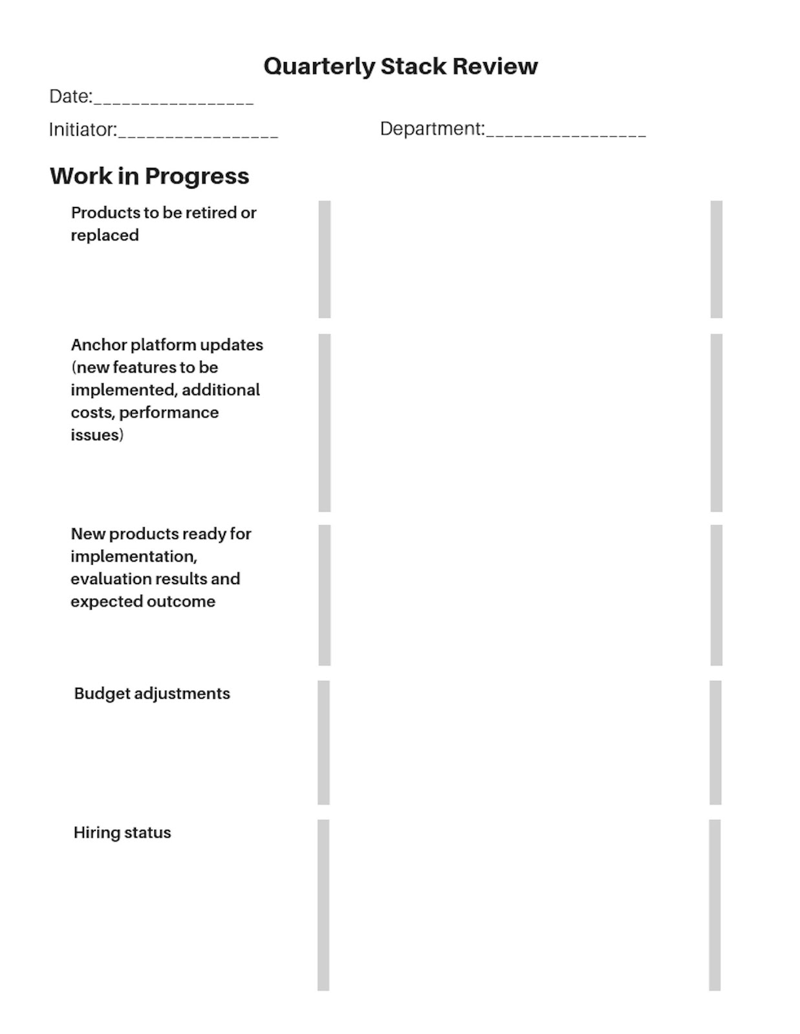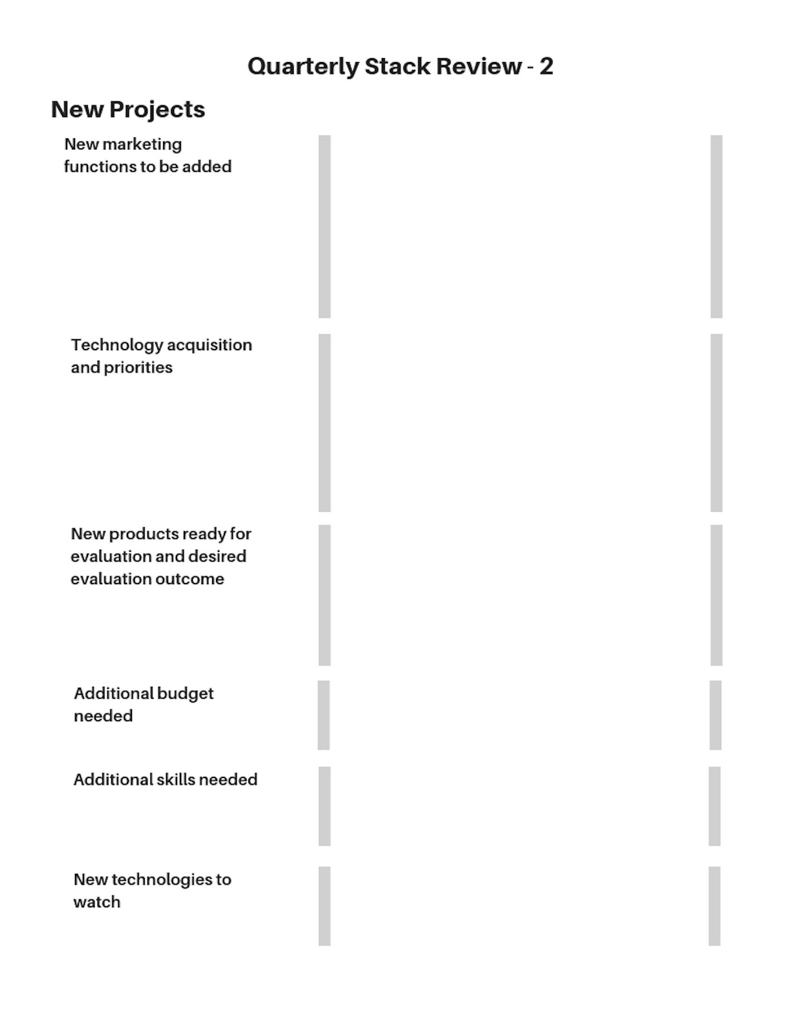Audiences are becoming increasingly fragmented, harder to reach, and harder to satisfy. To achieve business objectives and revenue success requires finding new ways and new places to meet and engage with prospects, and a focus on continually enhancing the customer experience. By default, this also requires staying on top of the latest advances in marketing technology and incorporating new, relevant technology into the stack. Marketing technology stacks never remain static; they must evolve as the business evolves.
In its State of Marketing Technology 2018 , Walker Sands found that a third of marketing organizations are using a formal methodology to conduct enterprise-wide technology assessments and that an additional 37% of organizations are working to create one. The same study saw that a quarter of enterprise organizations review their marketing technology stacks annually, and another quarter review them every six months.
Don’t let the effort you’ve put into place to audit, rationalize, and refine your marketing technology stack go to waste. Instead, establish a process for stack maintenance and evolution. For some companies this may be a continual exercise, and for others, a quarterly exercise. Define a process that works for you.
With the evolution of marketing technology over the last 10 years, marketing functions are more measurable than ever. Having proper measures in place for all significant tools in a stack creates accountability, both internally and externally. As part of the stack management process, it is important to conduct a vendor review and look carefully at each tool on a regular basis (quarterly, semi-annually, or annually) to ensure that the tool is delivering the value expected, to compare internal performance to industry standards, and to review new features that may be of value. Our colleague, Jeff Harvey, of Red Wing Shoes, recommends ongoing experimentation with tools in place to ensure that they are meeting expectations.


